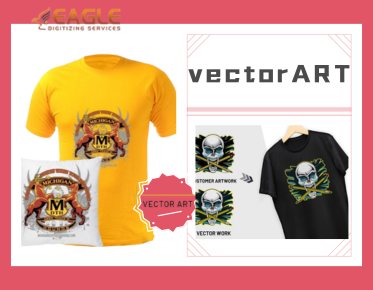Top 5 Vector Design Mistakes and How to Avoid Them
Introduction to Vector Design
Vector design is a cornerstone of modern digital art, enabling flexibility and scalability. However, despite its numerous benefits, artists and designers often encounter pitfalls that can compromise the quality of their work. By understanding common vector design mistakes, professionals can create more efficient and visually appealing graphics. In this blog, we will explore the top five mistakes in vector design and how to avoid them in your projects.
1. Ignoring Scalability Needs
One of the greatest advantages of vector graphics is their scalability. Nonetheless, designers sometimes forget to plan for varying display sizes, which can lead to inappropriate detail levels. To avoid this, always consider the potential uses and sizes of your vector art. Keep in mind tools offered by vector conversion services, which help prepare your design for multiple formats efficiently【4:3†source】.
2. Overcomplicating Designs
Complexity can destroy the elegance of vector designs. Many designers fall into the trap of adding unnecessary details, believing it enhances the artwork, when in reality it often clutters the image and increases file size. To prevent this, aim to streamline your design, focusing on essential elements first. Use tools and services like those providing vector tracing to maintain clarity and simplicity【4:4†source】.
3. Improper Use of Layers
Layers are crucial in vector design, providing a structured way to manage different elements. However, improper layer management can result in tangled artwork that’s difficult to edit. Always organize your layers logically and label them clearly. This practice will streamline future edits and collaborations, a strategy particularly useful when utilizing vector art conversion services for complex projects【4:3†source】.
4. Neglecting Color Modes and Formats
Incompatibility in color modes and formats can be disastrous for vector designs. Many designers forget to consider the final output and platform, which can cause unexpected color changes or file format issues. Ensure that you are working with the correct color mode, such as RGB for screen and CMYK for print. Services that offer raster to vector conversion are adept at ensuring your file maintains the correct color integrity【4:5†source】.
5. Failing to Optimize Files
File optimization is key for ensuring vector graphics can be easily shared and used without performance drain. Designers who ignore optimization can end up with bloated files, which are difficult to manage and slow to load. Use optimization tools available through some vector artwork conversion services to streamline your files effectively【4:6†source】.
The Role of Professional Vector Conversion Services
Companies like Eagle Digitizing offer professional vector conversion services to assist with these challenges. Their expertise in raster to vector conversion, image retouching, and file optimization ensures that your designs are not only conceptually sound but also technically perfect. Eagle Digitizing's ability to transform intricate designs into scalable vectors highlights the value of such services in maintaining high-quality outcomes.
Looking Forward
As vector design technology evolves, it's important for designers to refine their practices continually. Staying informed about industry trends and services can vastly improve your workflow and product quality. As digital art and design play an increasingly significant role in communication and marketing, mastering these aspects will set professionals apart in a competitive field. Consider the future of vector design — how might tools and technologies develop to further streamline and enhance the creative process?


.png)
.png)